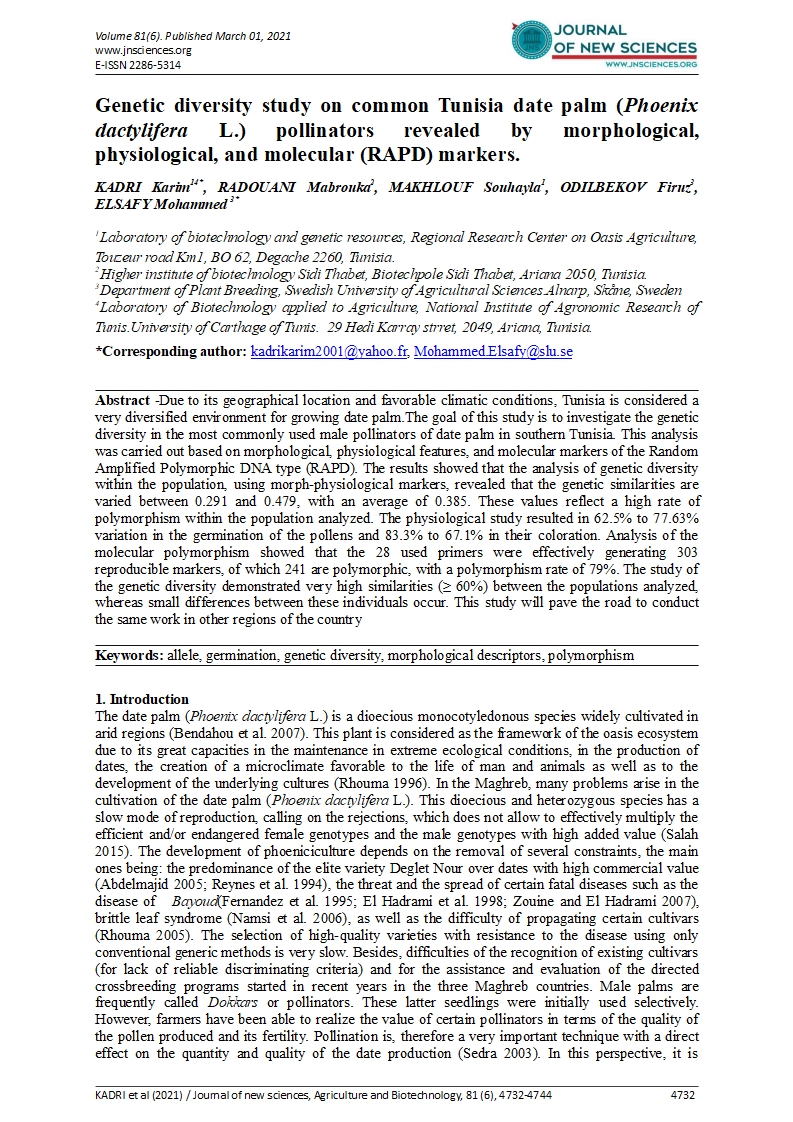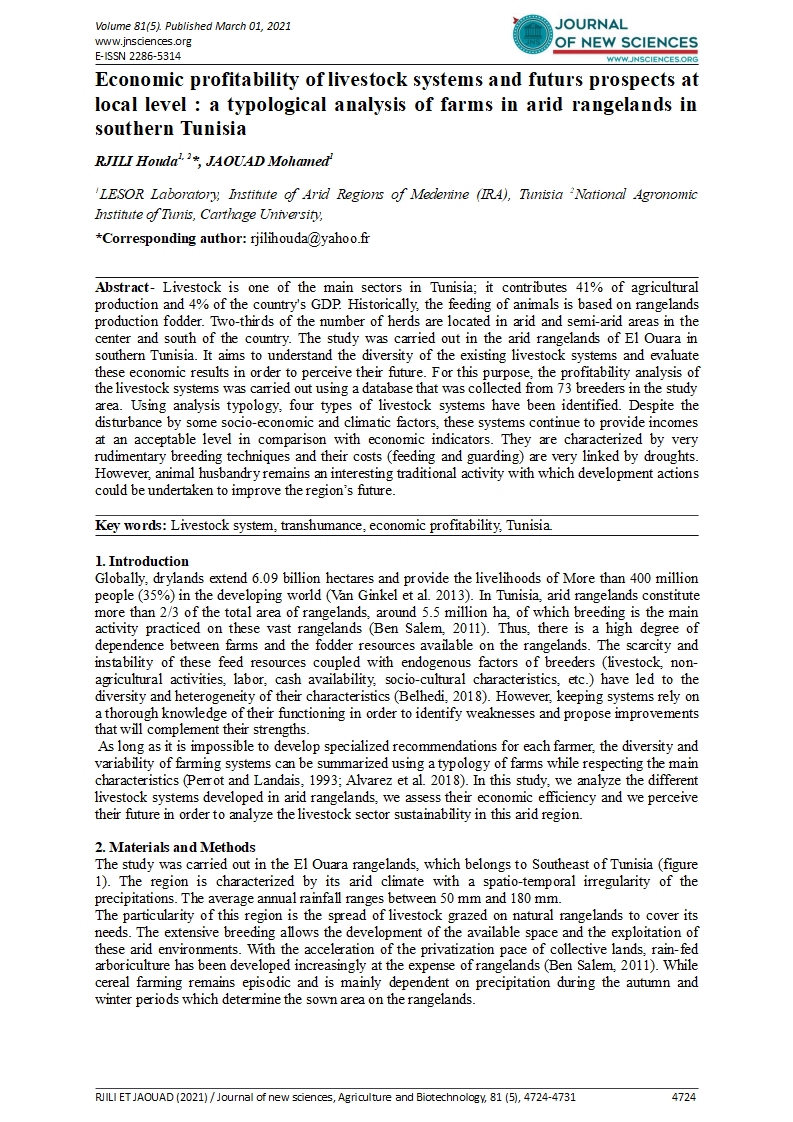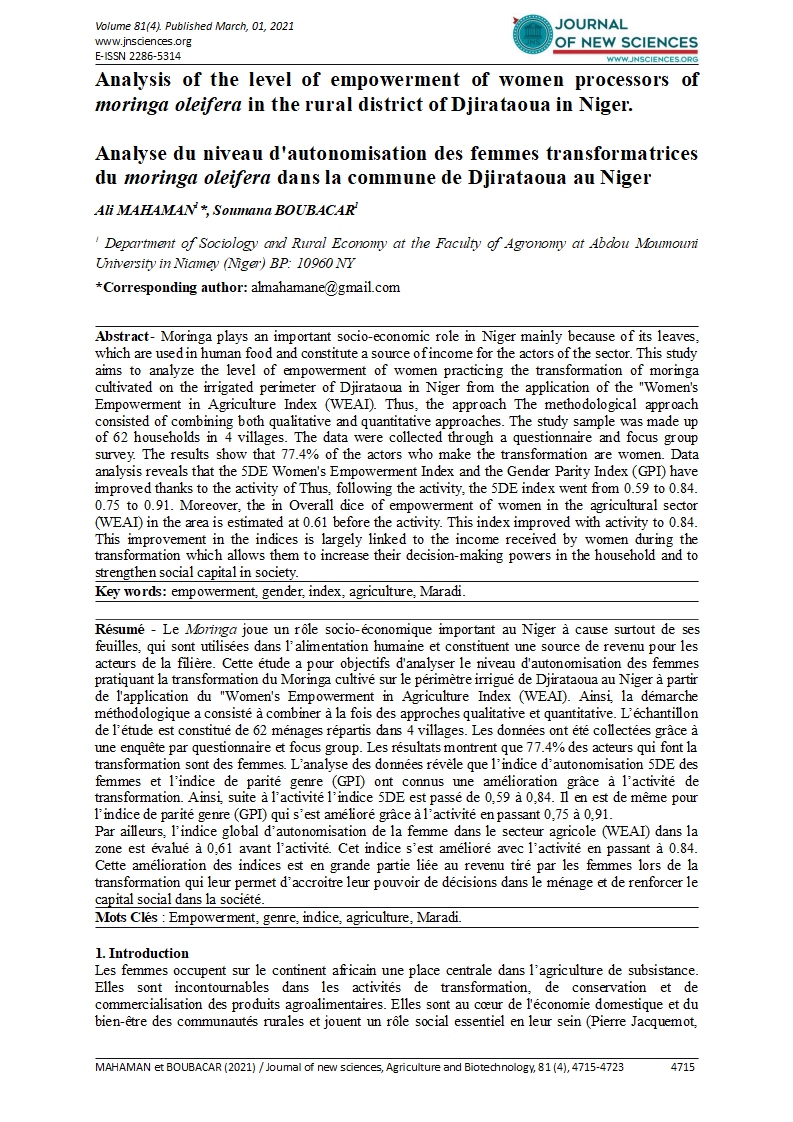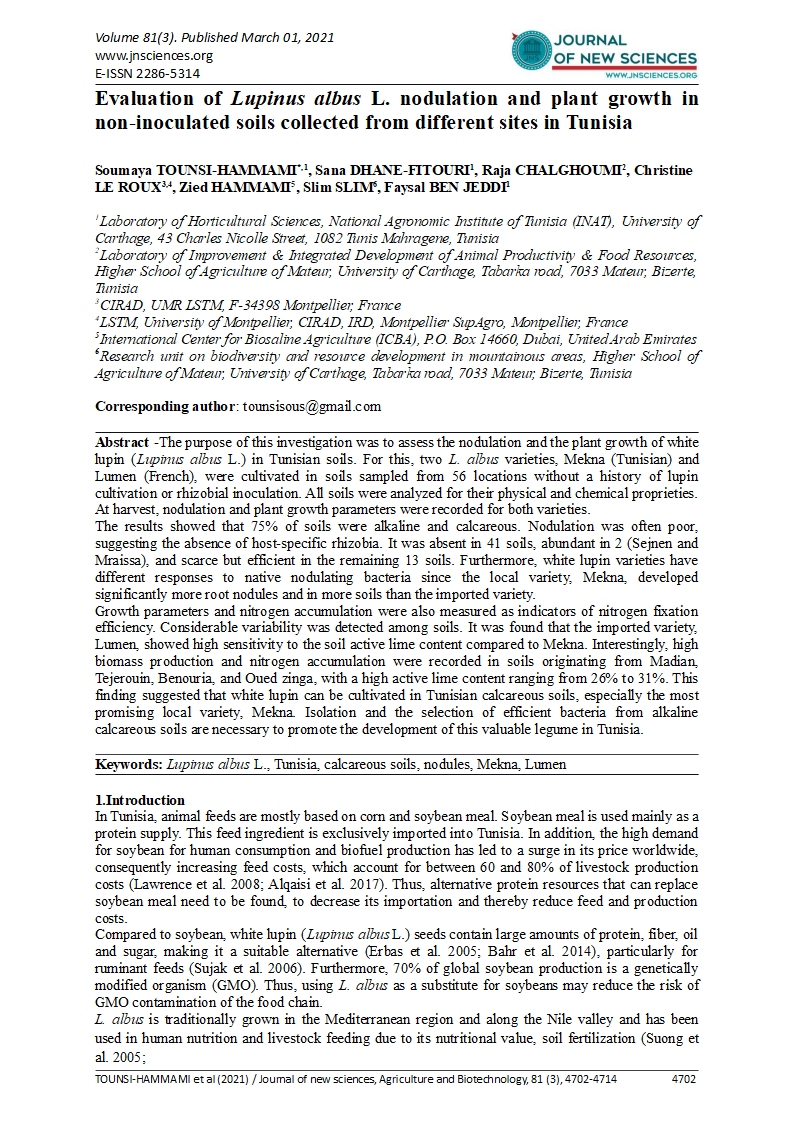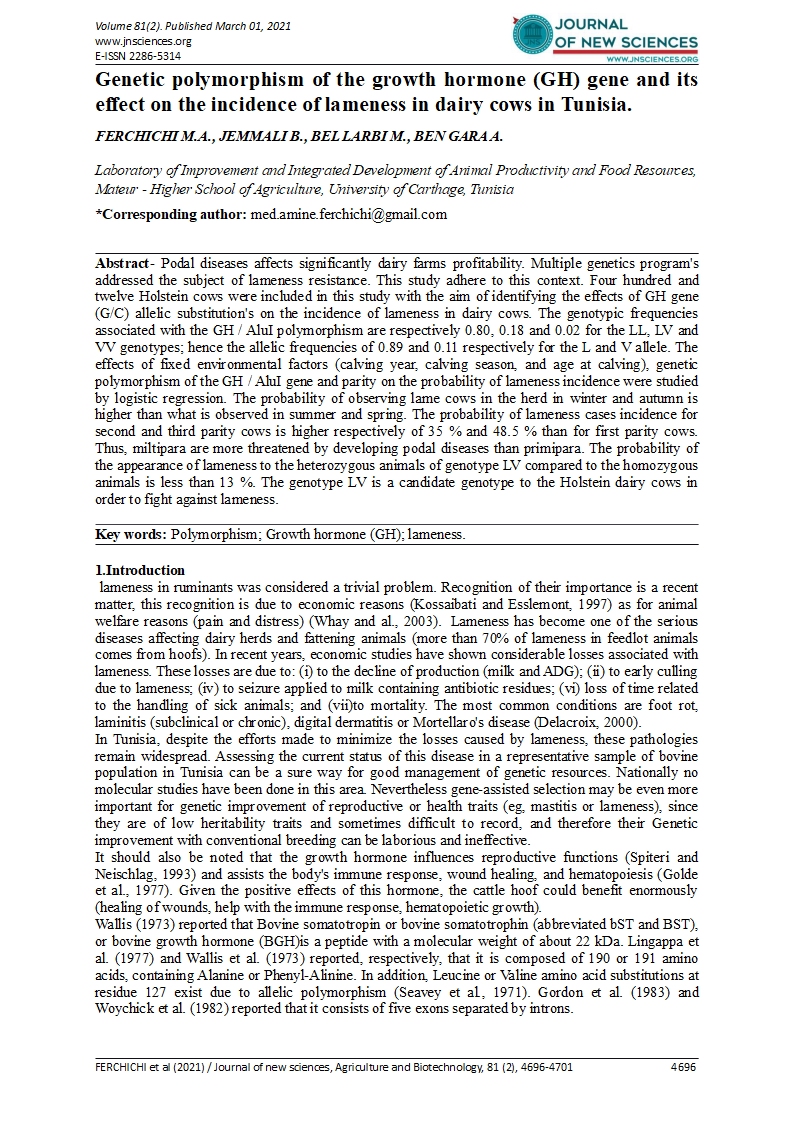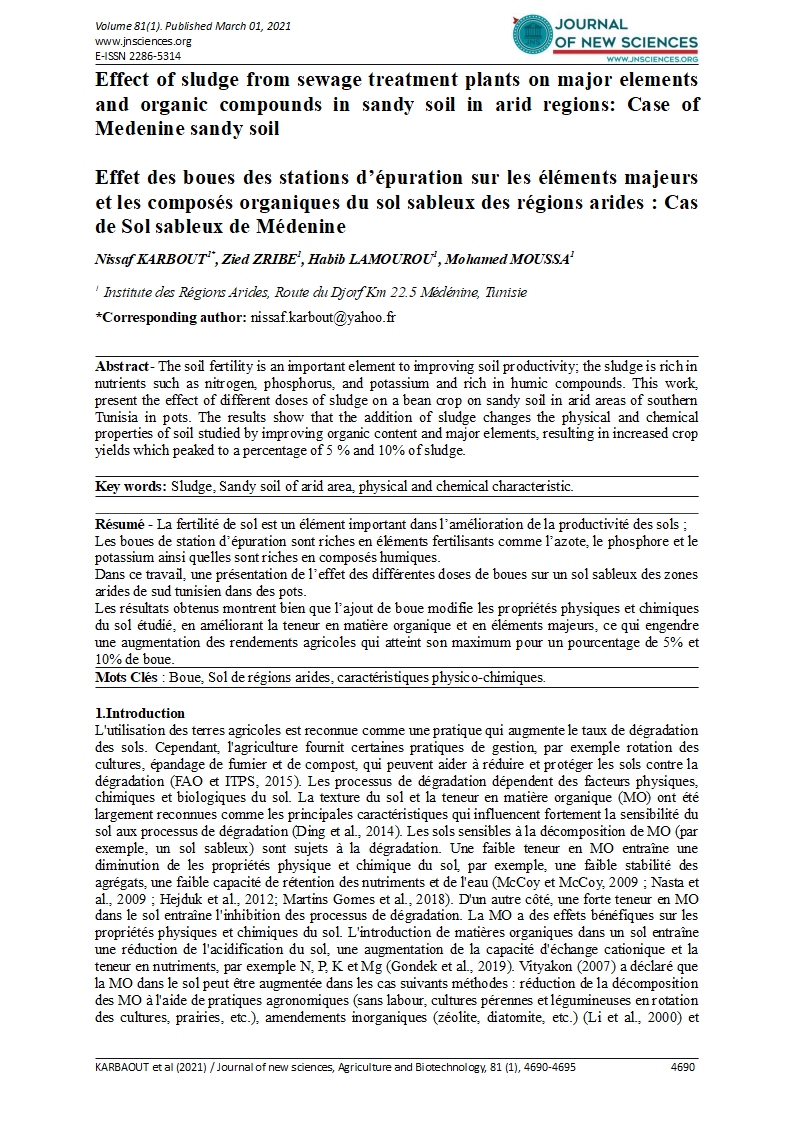- Category: Volume 81
- Hits: 3493
Salt and drought stress effects on germination and seedling growth on field pea (Pisum sativum L.)
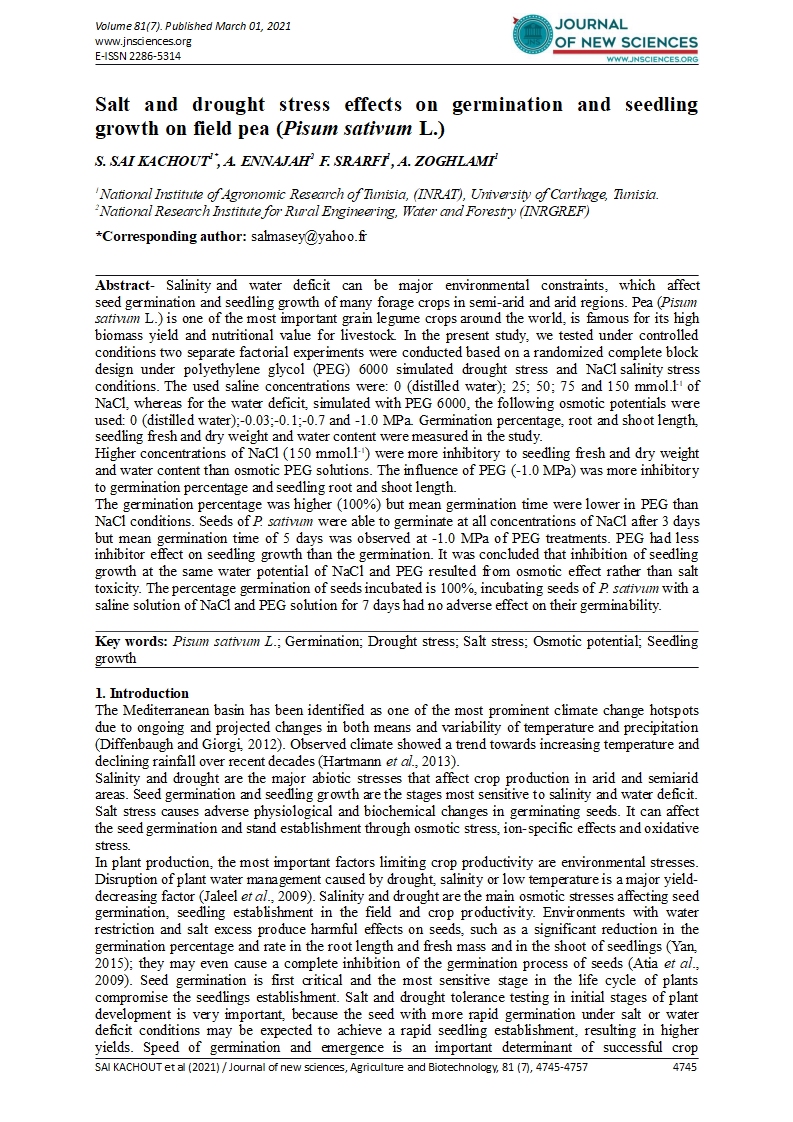
S. SAI KACHOUT1
A. ENNAJAH2
F. SRARFI1
A. ZOGHLAMI1
1National Institute of Agronomic Research of Tunisia, (INRAT), University of Carthage, Tunisia.
2National Research Institute for Rural Engineering, Water and Forestry (INRGREF)
Abstract- Salinity and water deficit can be major environmental constraints, which affect seed germination and seedling growth of many forage crops in semi-arid and arid regions. Pea (Pisum sativum L.) is one of the most important grain legume crops around the world, is famous for its high biomass yield and nutritional value for livestock. In the present study, we tested under controlled conditions two separate factorial experiments were conducted based on a randomized complete block design under polyethylene glycol (PEG) 6000 simulated drought stress and NaCl salinity stress conditions. The used saline concentrations were: 0 (distilled water); 25; 50; 75 and 150 mmol.l-1 of NaCl, whereas for the water deficit, simulated with PEG 6000, the following osmotic potentials were used: 0 (distilled water);-0.03;-0.1;-0.7 and -1.0 MPa. Germination percentage, root and shoot length, seedling fresh and dry weight and water content were measured in the study. Higher concentrations of NaCl (150 mmol.l-1) were more inhibitory to seedling fresh and dry weight and water content than osmotic PEG solutions. The influence of PEG (-1.0 MPa) was more inhibitory to germination percentage and seedling root and shoot length. The germination percentage was higher (100%) but mean germination time were lower in PEG than NaCl conditions. Seeds of P. sativum were able to germinate at all concentrations of NaCl after 3 days but mean germination time of 5 days was observed at -1.0 MPa of PEG treatments. PEG had less inhibitor effect on seedling growth than the germination. It was concluded that inhibition of seedling growth at the same water potential of NaCl and PEG resulted from osmotic effect rather than salt toxicity. The percentage germination of seeds incubated is 100%, incubating seeds of P. sativum with a saline solution of NaCl and PEG solution for 7 days had no adverse effect on their germinability.
Key words: Pisum sativum L.; Germination; Drought stress; Salt stress; Osmotic potential; Seedling growth

